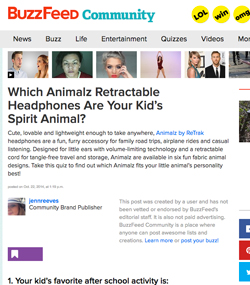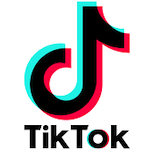 Content and outreach marketing are two buzzwords that have recently cropped up in the communications industry. Similar to public relations, these communications facets create and maintain relationships with an organization's key publics. Although these disciplines are different from each other, they have the same end goal of telling a brand's story.
Content and outreach marketing are two buzzwords that have recently cropped up in the communications industry. Similar to public relations, these communications facets create and maintain relationships with an organization's key publics. Although these disciplines are different from each other, they have the same end goal of telling a brand's story.
Content Marketing tells a brand's story by getting its owned media or originally created material in front of a targeted audience. The content must be valuable and relevant to the audience. Content marketing can come in many shapes and sizes: microsites, blogs, e-books, infographics, contributed articles, etc.
Additionally, this form of marketing doubles as a search engine optimization strategy. The Internet is a fluid medium that is constantly being updated. Something that was viral last week is almost ancient history this week. Continually updated content that is full of useful details satisfies the Internet and its various search engine algorithms.
The first goal of content marketing is to make the user say, "Wow! I want to share this with my friends." Then their friends want to share it with more friends, and the cycle continues. In the end, you want some of those friends to recommend you, make a purchase from you, etc.
One off-beat example of solid content marketing is from an Australian company, Metro Trains, which ran a campaign on rail safety. Its agency, McCann Melbourn, decided to take a non-boring route to this safety message with the song, "Dumb Ways to Die." The video was viewed more than 83 million times on YouTube and was later released on iTunes.
The brand even took it one step further and created a microsite as well as a game that can be played on both Apple and Android products. The campaign was a success with 1 million young people pledging to be safer around trains.
This effect was a decrease in train accidents and deaths by 21 percent because the brand provided valuable and relevant content on a medium that the target audience used.
 A BuzzFeed quiz was among facets of an outreach marketing campaign for Animalz. A BuzzFeed quiz was among facets of an outreach marketing campaign for Animalz. |
Outreach Marketing is similar to the public relations strategy media relations, but instead of targeting traditional media reporters, brands target bloggers and key social media influencers who are already advocates of theirs or their industry.
A brand's contact will reach out to these advocates and find more ways to incorporate the brand into the advocate's everyday life. The important thing to remember is that these advocates are not just people who can talk about the brand; they are an extension of the brand. Relationships with these advocates last far beyond one marketing campaign and build word of mouth both online and off.
Word of mouth is the No. 1 reason behind purchase decisions. This is particularly true within the sought-after mom audience. In fact, 55 percent of moms who use social media daily made a purchase decision based on the recommendation of a blog. From sending advocates product samples to review in a blog post to sending personalized direct messages on Instagram to strengthen relationships, outreach marketing can occur in many forms.
For example, recently M/C/C reached out to mom bloggers on behalf of its client Animalz by ReTrak. The agency was trying to gain as much recognition for the unknown brand during the busiest buying season of the year -- the holidays. The bloggers were all advocates of kids' technology or stocking stuffers.
After providing these bloggers with information about the volume-limiting headphones, photos, a BuzzFeed quiz and a product video, nearly 80 posts were written and engaged customers through almost 7,000 tracked social actions. In just three months, the agency helped drive more than 50 percent of Animalz sales in 2014, with a year-over-year increase of 1,755 percent.
Instead of just telling targeted audiences what they need to know about a brand, these tactics allow brands to participate in two-way dialogue and empower as well as encourage audiences to form their own message for the brand. If a brand is OK with letting go of some of the message control, then these tactics may be just the right fit.
***
Mike Crawford is the president of Dallas-based integrated marketing communications firm M/C/C.


 A look at today's magazines, newspapers and the graphics on television and consumer products raises the question of whether or not designers know their intended audience.
A look at today's magazines, newspapers and the graphics on television and consumer products raises the question of whether or not designers know their intended audience. PR and marketing departments are in the hot seat, as forecasts show that growth in advertising spend stalled in 2023 in the wake of cost-of-living increases and continued economic uncertainty.
PR and marketing departments are in the hot seat, as forecasts show that growth in advertising spend stalled in 2023 in the wake of cost-of-living increases and continued economic uncertainty. WPP has forged what it calls a “first-of-a-kind global agency partnership” with China’s TikTok, a short-form mobile video platform.
WPP has forged what it calls a “first-of-a-kind global agency partnership” with China’s TikTok, a short-form mobile video platform. Widespread disinformation may derail Biden/Harris agenda, according to a coalition of advocacy groups, who see the need for government-wide strategy to repair broken information ecosystem. (1 reader comment)
Widespread disinformation may derail Biden/Harris agenda, according to a coalition of advocacy groups, who see the need for government-wide strategy to repair broken information ecosystem. (1 reader comment) There's a media appetite for positive stories right now, anything to counterbalance the steady stream of bad news from the deadly spread of COVID-19. (1 reader comment)
There's a media appetite for positive stories right now, anything to counterbalance the steady stream of bad news from the deadly spread of COVID-19. (1 reader comment)


 Have a comment? Send it to
Have a comment? Send it to 
No comments have been submitted for this story yet.